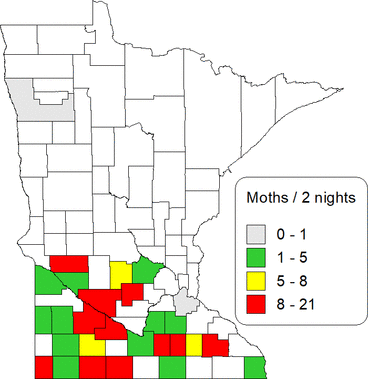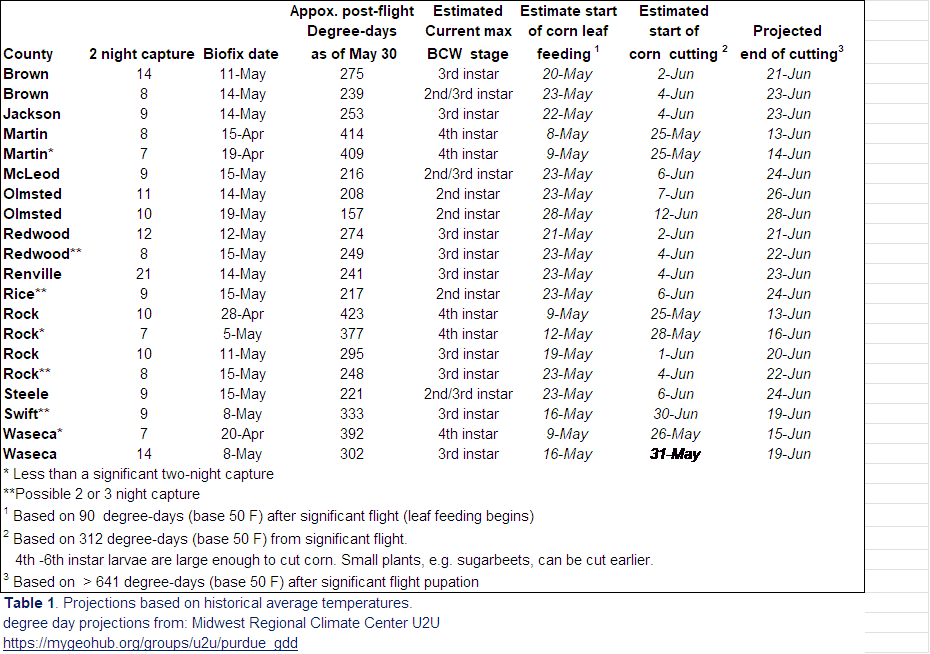2023 University of Minnesota Cooperative Black Cutworm Trapping Network
For more information: https://z.umn.edu/bcw-reporting
May 31, 2023
Greetings:
Fewer traps reported this week and trapping has now ended for the season. Black cutworm (BCW) activity, as detected by the reporting pheromone traps, was low. A few male moths were around, but no trap caught more than three moths/two nights and many locations captured no moths.

Because of numerous significant captures earlier (Figure 1), it isimportant to be aware of BCW when scouting vulnerable crops such as non-Bt corn, soybeans and sugarbeets.
Warm temperatures have sped up cutworm larvae (and corn) development (Table1). If they were able to survive the cold snap, cutworms from April moth flights into the southern tier of counties should be large enough to cut small corn now. 2nd and 3rd instar larvae from later flights should be large enough to be more easily found when looking around injured plants.
Some of the earliest planted corn is now in the 4-leaf stage. After the 5th leaf stage corn will be too large to be cut, even by nearly mature BCW larvae. Larvae from the earliest arriving moths will cease feeding and begin to pupate by mid-June.
Higher plant populations and an ability to compensate for stand loss can reduce BCW risk to soybeans. Some fields in areas that were planted after large moth flights have poor soybean emergence due to crusting. Fields with marginal stands need to be scouted closely.
A sharp-eyed consultant contacted me with a report and photo verification of black cutworms in sugarbeets in Pope and Kandiyohi Counties. We did not have a trap cooperator in those counties but neighboring counties to the south and west did pick up significant flights. The consultant’s estimate of 2nd and 3rd instar larvae fits well with an early to mid-May moth arrival.
See more details here: https://extension.umn.edu/corn-pest-management/black-cutworm. A printable PDF along with previous reports can be found https://swroc.cfans.umn.edu/research/ipm/bcw-network.

Along with the black cutworms, true armyworm (TAW) moth activity declined during this report period. Larvae should be large enough to be found with a sweep net or by shaking larvae from grasses onto the ground beneath the plants. Corn, and to a lesser extent soybeans, planted into dense rye stands that were still green and growing when armyworm moths arrived are at some risk. Corn and small grain fields can also be infested from dense forage grasses on their borders.
I will be looking at dense brome grass on field edges and some rye stands over the next week or so to see what I can find. For TAW scouting and management tips see https://extension.umn.edu/corn-pest-management/armyworm.
Please let me know if you become aware of fields with cutworm or armyworm problems.
Until next week,
Bruce
